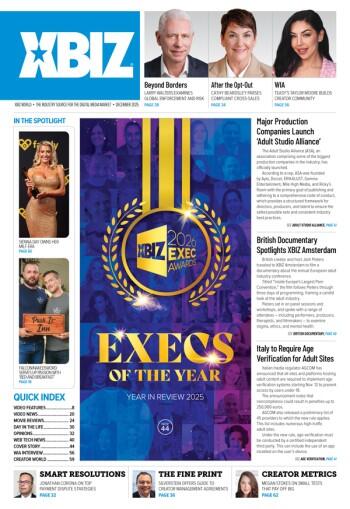Today’s internet is a mobile one, with the majority of usage initiated via a mobile device — and a large level of multi-device users accessing sites on desktops and mobile, too. This makes it vital for merchants to offer mobile friendly websites — including mobilized join pages, shopping carts and more.
While the distinctions are dissolving, when we discuss “mobile billing,” we’re talking about both direct carrier billing, where purchases and premium service charges, SMS text messages and more are charged to a customer’s monthly phone bill, and we also mean mobile-friendly revamps of traditional credit card billing processes.
Since content delivery shifted to mobile devices, there has been faster transaction times, less data requirements, and far more streamlined payment pages. —Karen Campbell, OrbitalPay
In this latter case, large, easy-to-push buttons and form fields, plus a lack of small type and other steps are needed to ease the process, while adding an extra layer of complexity to the traffic scene through a need to segregate traffic according to carrier, device and access method, since carrier-connected users are billed differently than customers connected to a Wi-Fi hotspot.
It’s also important to note that processing carrier transactions is not always the most profitable route for merchants to take, so care must be taken in making the right choices, with a focus on diversity in processing options for markets where credit card payments are not the norm.
OrbitalPay Vice President Karen Campbell told XBIZ that the trends in billing for 2017 and beyond will continue to be focused on the mobile market.
“Since content delivery shifted to mobile devices, there has been faster transaction times, less data requirements, and far more streamlined payment pages. All of these things are a must in the marketplace today,” Campbell says. “As billers with a focus on adult, we need to be mindful of the merchants specific need to collect credit card payments across multiple platforms and be able to provide detailed information in regards to spending patterns as it relates to customer retention.”
Campbell also notes that a one-click transaction is a must have for many business models including live cams, where customers can buy time tokens and merchants can easily upsell add-on products.
Payze CEO Doug Wicks told XBIZ that the European and Asian mobile markets have clearly outpaced the U.S. market for the past 20 years.
“I remember living in Europe 20 years ago when mobile technology allowed for purchasing directly from phones at that time,” Wicks says. “Although the U.S. market has been slower to catch up, the growth of mobile billing and purchasing markets is primed for the U.S. in 2017.”
Wicks says that most businesses now have, or are currently adapting to add, mobile pages and mobile purchasing for their consumers, which makes the growth potential tremendous in the United States.
“The only sticking point still lies with the major billing carriers with relation to adult content and what they will allow or reject on their networks,” Wicks explains. “The future will see the carriers relenting to allow this content because of the clear data transfer potential.”
CCBill’s Gary Jackson explains that there are two aspects to mobile billing: one is carrier billing and the other is web payments from any device.
“There definitely is a place for carrier billing in certain markets in which phone and carrier payments are predominant and content is consumed from mobile devices,” Jackson, CCBill’s managing vice president of sales, told XBIZ. “There are markets that are wide open and favor carrier billing over traditional web-based billing models.”
Jackson sees a trend where some providers are building specifically for a carrier model for simplified mobile devices.
“They go into this with the understanding that carrier billing carries a different kind of risk, such as actually capturing the funds, as well as awareness of the high cost of the transaction,” Jackson explains, noting that “One reason this focused model has potential is partly because you’re not cannibalizing your credit card transactions on the more traditional, realized options of payment.”
From the mobile device standpoint, the trend we see is really nothing groundbreaking but it is still taking a lot of time for people to catch up.
“Mobile doesn’t exist as a separate category anymore. It has changed from building or adding for mobile to building for anywhere,” Jackson says. “Mobile has turned into the fact that you need to be able to serve content across any device, take payments on any device, have an interface that is workable across any device with a touch or click or tap and be able to service the transaction from any device or screen.”
This highlights how consumers are increasingly shopping via mobile device then switching over to a desktop to finalize the purchase.
According to Harmik Gharapetian, Epoch’s vice president of sales and marketing, the company’s clients have tremendous success with mobile sales because its smart payment pages automatically optimize for mobile devices. This is an especially useful feature for improving the seamlessness of cross-platform transactions, where desktop and mobile users, as well as visitors to sites featuring responsive designs, can enjoy a more cohesive user experience.
Beyond fitting existing payment mechanisms into a mobile form factor, other technologies are taking a different path. For example, according to Inovio’s Conal Cunningham, we are seeing the onset of e-wallet payments.
“The premise of e-wallets is to make it easy for consumers to pay online, but without sharing their credit card data with every website where they want to make a purchase,” Cunningham told XBIZ. “E-wallets often are app-based, so they allow for fast and simple mobile payments, both in-app and on traditional websites.”
Cunningham cites Apple Pay and Google Wallet (formerly Google Checkout) as ubiquitous and well-known online payment methods, but notes that there are other contenders in this arena.
“Visa’s Visa Checkout and MasterCard’s MasterPass are also e-wallet methods used by millions of cardholders, while Samsung Pay is a popular e-wallet in Asia, processing more than $500 million in its first six months, and will feature online purchasing this year,” Cunningham says. “Adding icons for these payment methods on mobile [and desktop] sites can add additional lift for many merchants.”
Regardless of the specific options a merchant chooses, the common need is to serve mobile web users, not because they are “a nice add-on,” but because they are your market today.






